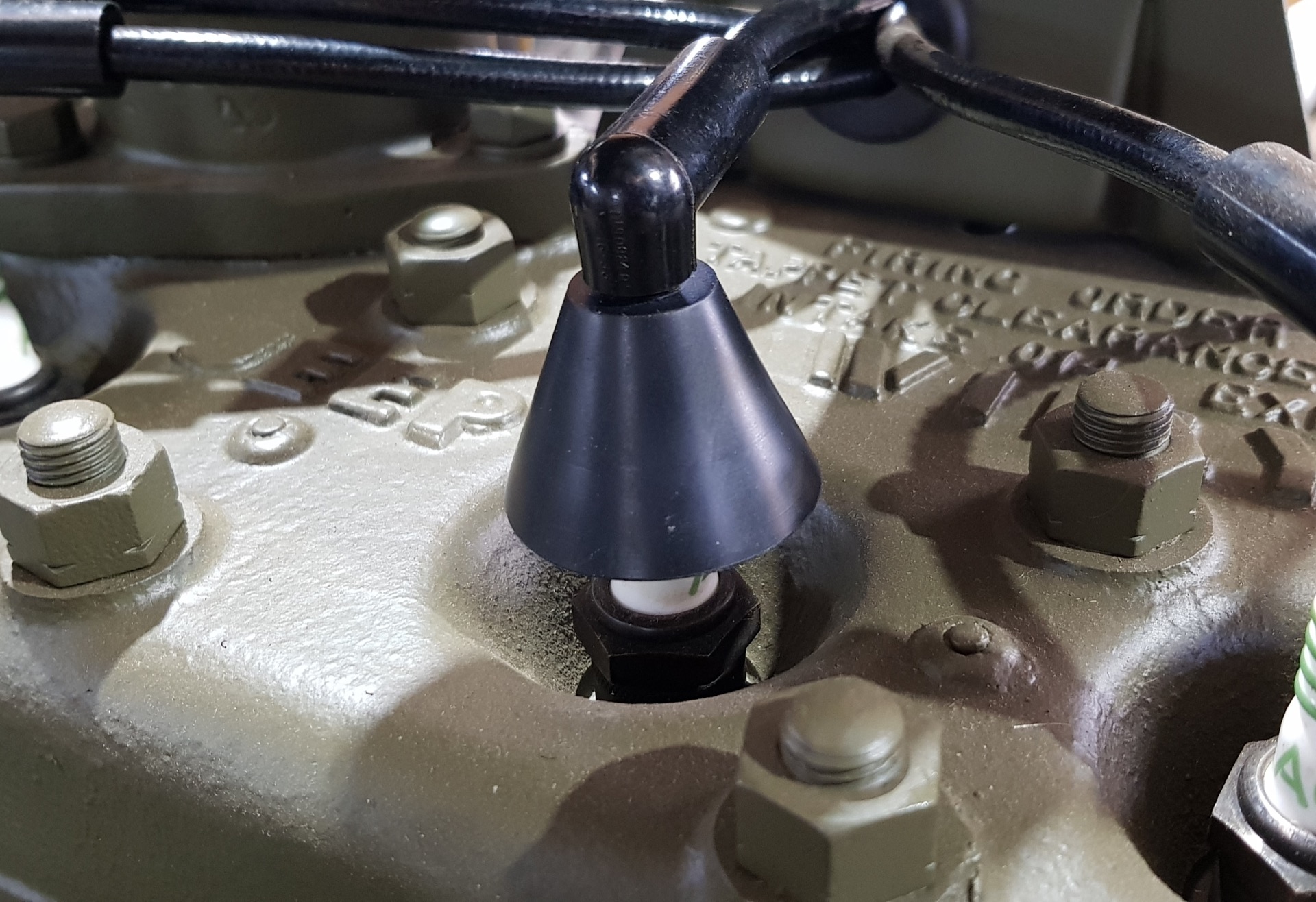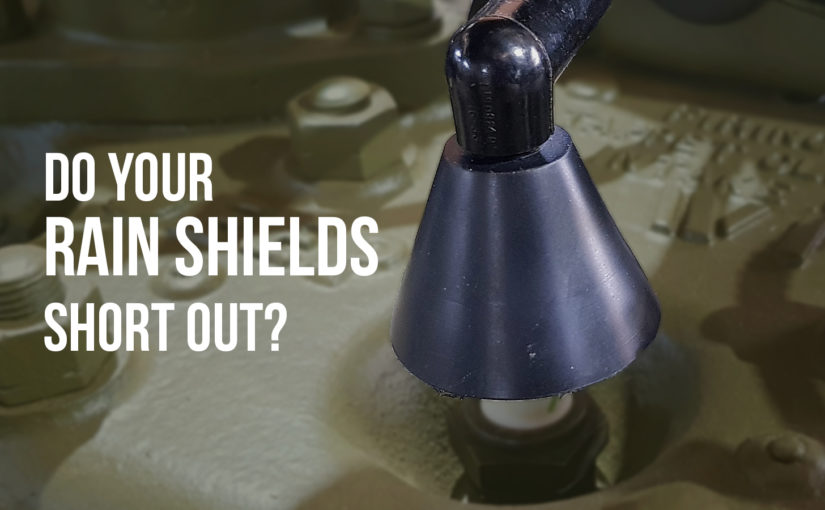For a long time, WWII Jeep restorers have called these Rain Shields. Why is a mystery because they never get rained on. The WWII Jeep parts books, Willys, Ford and SNL-G-503 all call them “Cap – Spark Plug Insulator”.
Our customers invariably search for Rain Shields so we also refer to them as a Rain Shields but they are a Cap that goes over the spark plug insulator and not down on the cylinder head to protect from rain.
If you have experienced these shorting out the problem it is not a material problem, its an installation problem.
Restorers invariably think the Cap must go down to and touch the cylinder head and this is totally wrong.

I am sure you have a copy of TM-9-803 but just in case you don’t here is a copy of one page which shows the rain shield goes as high as possible on the spark plug resistor before the lead is pushed onto the spark plug proper, there should be a considerable gap between the bottom lip of the shield and the cylinder head.
The high voltage in the actual spark plug circuit is likely to be around 20,000 / 30,000 volts and this can skirt across the surface of many non-conductive materials. There are more technical descriptions as to high voltages and its ability to travel over surfaces and jump gaps depending on sharp edges etc but all this is usually more than a Jeep restorer wants to know.
Maybe some can remember children getting car sick and Dad fitting a rubber strap to the car which touched the ground and static electricity was dissipated over the rubber strap and solved the problem, the rubber was not conductive.
So, if you experience this situation make sure the cap is fitted all the way up the copper part of the spark plug resistor and touches the Bakelite part of the insulator.

One final note, we have seen a few early NOS caps with small holes in the top that appear to fit the spark plug and not the insulator. We suspect these are first production and are very rare as we have only seen a couple in the past 40 years. Most NOS Caps we have seen are the larger top holes.
If you have any questions please email darcy@mvspares.com and we will do what we can to assist.
Happy restoring,
Darcy Miller


Howdy there, can you still buy these spark plug caps? If they are available for sale, do they come with a set of leads? Otherwise are any reproductions been made? Where are you located? I’m I’m Brisbane. I have a 1944 gpw & a willys trailer. Do you have a phone number?
Hi James. Thanks for getting in touch with us. We are in the greater sydney region and would love to help out. You can contact Darcy directly at darcy@mvspares.com.
Thanks Darcy, what a great article. Straight forward, informative and simple to understand. Well done.
I always enjoy learning Jeep, especially when it is from Darcy. I am now a little Jeep smarter than I was a minute ago
Helpful advice thanks Darcy. Might be useful to discuss the rubber v Bakelite cap types for completeness
John
That’s true , we look forward to that one
John, The subject was why do Rubber Cap sometimes short out and that is covered as an installation issue. The Bakelite caps were Ford style and a Ford commercial part as described in Ford Military parts lists and used on civilian and commercial Ford vehicles, they are in fact smaller than the Willys rubber style and the Bakelite ones do not suffer as much from surface tension in an electrical sense. Thanks to all for the compliments and good to see some discussion generated.
Regard Darcy
I had trouble with a new set, no 2 shield would sometimes throw a beautiful spark across to a bolt head on the thermostat housing I had to remove them. Can’t recall where I bought them
Thank goodness for Darcy and MV spares.
Best
Robert B.
Muy buen articulo Darcy , gracias por compartir tus conocimientos.
Great article, thanks for sharing. As your article suggests designed with a purpose in mind but more often than not incorrectly fitted and therefore deemed to be faulty as a result, me included. Thanks for clarifying correct fitment, time my rain shields… oops insulator caps were put back on my Jeep.
Cheers Richard
Thanks Darcy, I never could figure out why people called them “rain caps” either…so now I know the correct terminology and it all makes sense. I guess we should be calling them “resistor caps”?
Some of those repo caps are made with silicone (which arcs like mad with high voltage ) Are these pure rubber ?